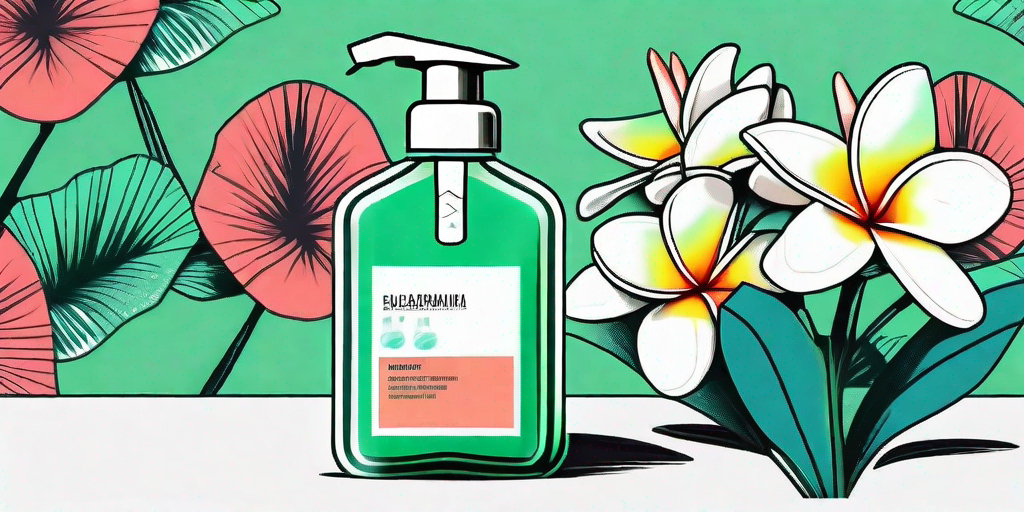
Ah, the plumeria. A tropical beauty that graces many a garden with its vibrant, fragrant blooms. But like any diva, it comes with its own set of challenges. One of the most common? Plumeria rust. This pesky fungus can turn your garden's star performer into a wilted, rust-spotted mess. But fear not, dear gardener. We're here to help you banish plumeria rust from your garden once and for all.
Understanding Plumeria Rust
Before we dive into the nitty-gritty of combating plumeria rust, let's take a moment to understand our enemy. Knowledge is power, after all. And in this case, knowledge can mean the difference between a flourishing plumeria and a rust-ridden disaster.
Plumeria rust, or Coleosporium plumeriae if you want to get technical, is a fungus that primarily affects the leaves of the plumeria plant. It's characterized by yellowish-orange spots on the underside of leaves, which can eventually spread and cause the leaves to drop prematurely. Not exactly the look we're going for in a lush, tropical garden.
Where Does Plumeria Rust Come From?
Like any good villain, plumeria rust has a knack for showing up uninvited. It's most commonly spread by wind or water splash, and it thrives in warm, humid conditions. So if you're gardening in a tropical or subtropical climate, keep a close eye on your plumeria plants.
Plumeria rust can also overwinter on fallen leaves, which means it can make a surprise reappearance in your garden even after you thought you'd gotten rid of it. Sneaky, isn't it?
Preventing Plumeria Rust
Now that we know what we're dealing with, let's talk prevention. After all, the best way to deal with plumeria rust is to stop it from showing up in the first place.
Here are a few tips to keep your plumeria plants rust-free:
- Keep your plants well-spaced to promote good air circulation.
- Water your plumeria at the base, not from above, to avoid creating a moist environment that rust loves.
- Regularly remove and dispose of fallen leaves to prevent rust from overwintering.
Choosing Resistant Varieties
Another effective way to prevent plumeria rust is to choose resistant varieties. Yes, you heard it right. Some plumeria varieties are less susceptible to rust than others. So if you're just starting your plumeria collection, consider opting for these rust-resistant stars.
Some of the most popular rust-resistant plumeria varieties include:
- 'Aztec Gold'
- 'Celadine'
- 'Kauka Wilder'
Dealing with Plumeria Rust
But what if, despite your best efforts, plumeria rust still manages to infiltrate your garden? Don't despair. There are several effective ways to deal with this pesky fungus.
The first step is to remove and dispose of any infected leaves. This can help prevent the rust from spreading to other parts of the plant or to other plants in your garden. Remember, plumeria rust is a master of disguise, so be thorough in your leaf inspection.
Using Fungicides
If removing infected leaves isn't enough to control the rust, you might need to bring in the big guns: fungicides. There are several fungicides on the market that are effective against plumeria rust. Just remember to always follow the manufacturer's instructions when using these products.
Some of the most commonly used fungicides for plumeria rust include:
- Mancozeb
- Chlorothalonil
- Propiconazole
Frequently Asked Questions
Can Plumeria Rust Kill My Plant?
While plumeria rust can certainly make your plant look less than its best, it's unlikely to kill it. However, severe infections can weaken the plant and make it more susceptible to other diseases and pests. So it's best to deal with plumeria rust as soon as you spot it.
Can I Use Homemade Remedies to Treat Plumeria Rust?
There are several homemade remedies that some gardeners swear by for treating plumeria rust, such as a mixture of baking soda and water or milk and water. However, these remedies are typically less effective than commercial fungicides. So if you're dealing with a severe rust infection, it's best to opt for the proven solutions.
Can I Prevent Plumeria Rust with Regular Pruning?
Regular pruning can certainly help prevent plumeria rust by improving air circulation around the plant. However, it's not a foolproof solution. Even with regular pruning, it's still important to keep an eye out for the telltale signs of rust and to take action if you spot them.
Conclusion
So there you have it, folks. The ultimate guide to saying goodbye to plumeria rust and hello to a beautiful, vibrant garden. With a bit of knowledge, some preventative measures, and the right tools, you can keep your plumeria plants healthy and rust-free. Now go forth and garden with confidence!















